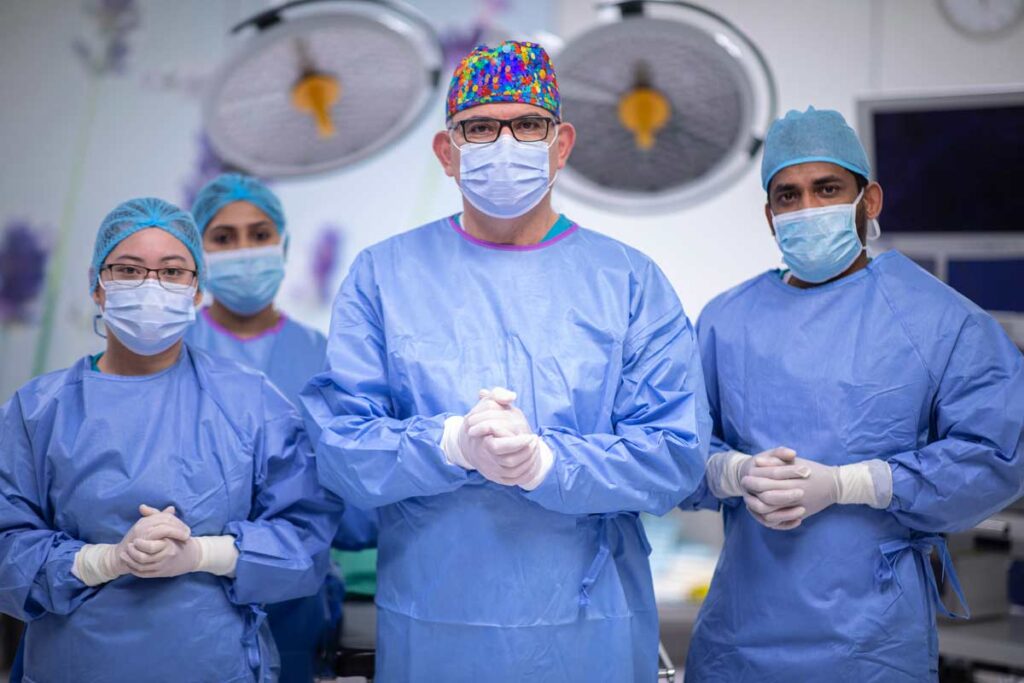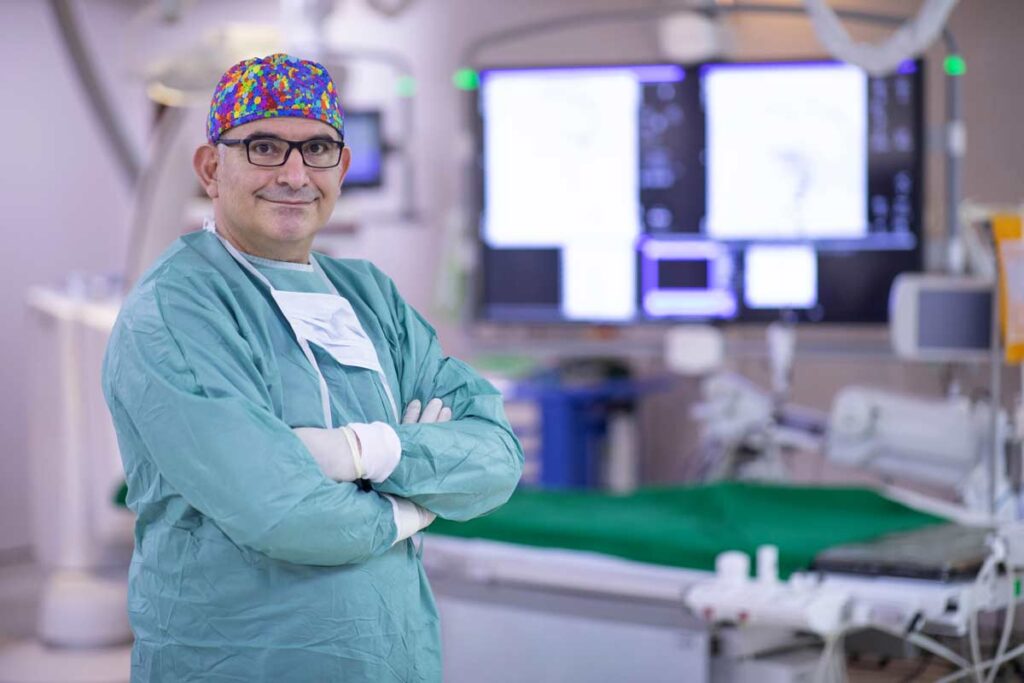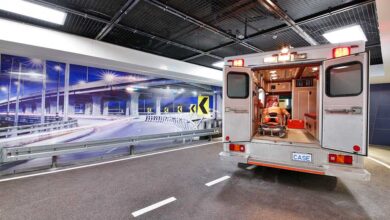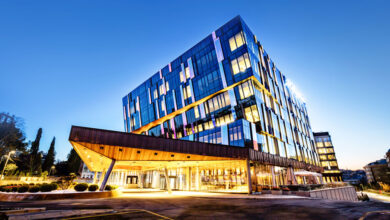Future trend now available at Almoosa Specialist Hospital
Neuronavigation in the surgical management of brain tumors

Our Neuroscience Center, led by Dr. Mohammad Kassab, a consultant neurosurgeon, managed to treat a grade 2 brain tumor that causes recurrent epileptic seizures, using a combination of modern technologies and a Neuronavigation device.
Dr. Kassab states that the patient came to the emergency department in a critical condition after suffering from severe seizures, leading to loss of consciousness while at home.
Dr. Hasan Salama, a consultant neurologist, received the case, a head CT scan was requested, it pointed to changes in the left side of the frontal lobe.
To confirm the diagnosis, Dr. Salama ordered an MRI scan, which showed an infiltrated tumor spread locally in the left frontal lobe.
Based on the examination and the investigation, the doctor decided to transfer patient Faisal to the Neuroscience Center, where a specialized medical team was formed to treat Faisal’s case. After full discussion with the patient’s family, the surgical team decided to remove the tumor and discover its histological nature.
Dr. Kassab adds that we have faced several challenges in treating Faisal’s case, the most prominent of which is that the tumor is widespread adjacent to the motor area and partially infiltrating into it. The excision process may lead to paralysis on the right side of the body, in addition to the possibility of affecting the speech control area (pronunciation) located on the left side of the brain.
The medical team decided to remove the tumor under local anesthesia and keep the patient in a state of wakefulness so that the team can perform repeated movement and speech tests during surgery to ensure that the movement and verbal area adjacent to the tumor area is not breached or damaged during the surgical excision.
Accurate localization of the tumor was another challenge. To face this challenge, a Neuronavigation technology was used to help identify the brain’s different sensitive functional areas and accurately determine the tumor’s location to avoid making a wide opening to the skull, thus avoiding further complications. The operation took around three hours, and the tumor’s nature was confirmed by histological examination of the sample and biopsy taken during surgery. The operation went successfully and smoothly. Praise be to God. The patient is currently in good health and did not have any complications or any new deficit, and was discharged from the hospital 48 hours after the surgery.
It is worth noting that such cases’ success requires accurate diagnosis, wise decision-making, excellent surgical and anesthesia expertise, and the availability of modern high-tech surgical equipment available in the hospital.
Case: grade 2 brain tumor that causes recurrent epileptic seizures
Diagnosis: infiltrated tumor spread locally in the left frontal lobe.
Challenges: the tumor is widespread adjacent to the motor area and partially infiltrating into it. The excision process may lead to paralysis on the right side of the body, in addition to the possibility of affecting the speech control area (pronunciation) located on the left side of the brain.
Techniques used: Neuro-navigation technology was used to help identify the brain’s different sensitive functional areas and accurately determine the tumor’s location to avoid making a wide opening to the skull, thus avoiding further complications.

Medical team:
- Dr. Mohamed kassab, consultant neurosurgeon
- Dr. Hassan Salama, consultant neurologist
- Team of anesthesiologists
















